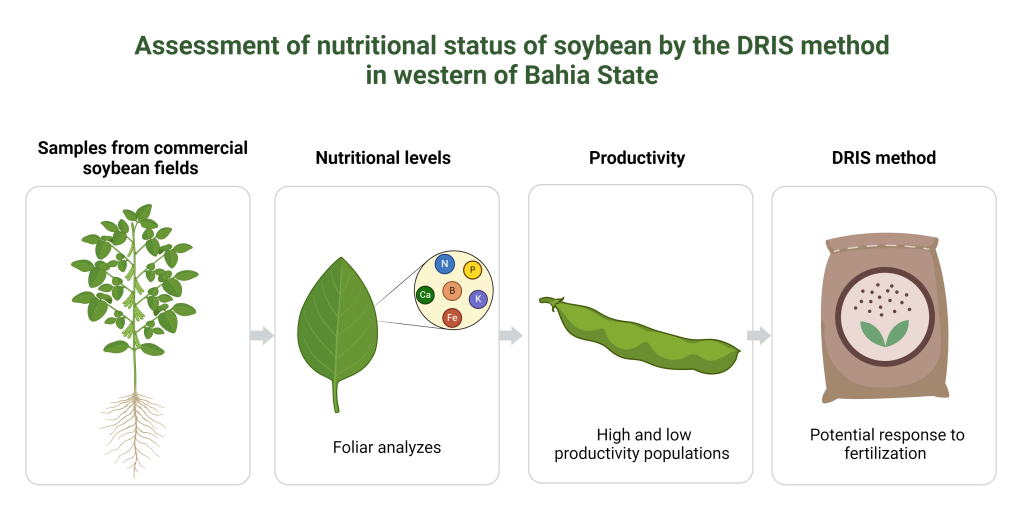Rev. Bras. Ciênc. Solo.2024;48:e0230099.
Assessment of nutritional status of soybean by the DRIS method in western of Bahia State
08/Apr/2024
DOI: 10.36783/18069657rbcs20230099
Graphical Abstract

Highlights
DRIS considers possible nutritional interactions in plant tissue.
In high-yield subpopulation, Zn and Mn are the most limiting nutrients due to deficiency.
In the low-yield subpopulation, P and Mn are the most limiting nutrient.
ABSTRACT
Increasing soybean yield in the MATOPIBA region can be attributed to fertility management, which is crucial to achieving maximum agronomic efficiency. Therefore, the proper management begins with the assessment of plant nutrition. This study aimed to evaluate soybean nutritional status in western Bahia using the Diagnosis and Recommendation Integrated System (DRIS). Database comprised 153 samples from commercial fields located in the research area. To carry out the evaluation using the DRIS method, the database contained information on nutritional levels and leaf productivity of the sampled areas. Database was divided into high-productivity populations (reference population) and low-productivity populations, based on the inflection point value of the cumulative cubic function of yield. The DRIS method allowed for evaluating the potential response to fertilization; however, this method was inefficient in recommending fertilizer doses in both subpopulations. For the sufficiency levels proposed by DRIS, the nutrients N, K, Ca, Mg and S had their maximum and minimum limits reduced, while Cu, Fe and Zn had their ranges of sufficiency expanded, when compared with ranges proposed by other authors. In addition, Zn and Mn were more limiting due to lack for the high-yield subpopulation, and P and Mn for the low-yield subpopulation. The most limiting nutrients due to excess were P and Zn for the high-yield, while K and S were limiting for the low yield subpopulation.
447

